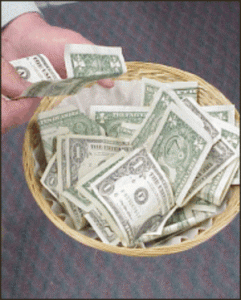Alternatives to Traditional Salary-and-Benefits Offers
Wednesday, September 29th, 2010 Unemployment is still stubbornly clinging close to the 10% mark. Talented people have been out of work for 12, 18, even 24 months or more. Many are getting desperate; some might consider “desperate” an optimistic view of their situation.
Unemployment is still stubbornly clinging close to the 10% mark. Talented people have been out of work for 12, 18, even 24 months or more. Many are getting desperate; some might consider “desperate” an optimistic view of their situation.
If your company is hiring, plenty of highly-experienced workers might be willing to do almost anything to land a position—any position. We’re hearing reports of job candidates agreeing to more employer-friendly hiring conditions, such as working for greatly-reduced salaries, accepting limited benefits packages, trying out performance-based pay and taking temporary positions.
Some employers see offering temp-to-hire jobs as a win/win way to add needed staff without maximum risk. Others are using contract freelancers in the same way, with even less risk, since they do not come onto the payroll until a hiring decision is made. Several innovative companies are offering an ownership stake in lieu of higher salaries and benefits—which works well for risk-taking, entrepreneurial types of employees.
These new-reality ways to add staff without increasing expenses or risk are worth considering if your company is teetering on the edge or rebounding from the recession. But remember—whether you offer lower salary, part-time work, temporary positions, or a stake in your company, don’t make the mistake of skipping the pre-employment screening process.
Reducing risk by hiring temporary or part-time employees is a wash if you increase the risk to your company by leaving out background checks. All contract, temporary and part-time workers should be properly pre-screened. And before you offer a stake in your company to a new employee, don’t you want the peace of mind that comes with knowing you’ve conducted all the criminal and credit checks you can?
Who knows how long unemployment will remain at this rate, or how much longer employers will be able to hire such high levels of talented employees under favorable conditions?




